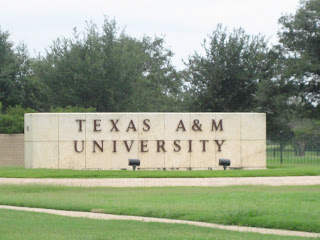
JEOL is a leading global supplier of scientific instruments used for research and development in the fields of nanotechnology, life sciences, optical communication, forensics, and biotechnology. I was fortunate enough to visit the company for two weeks.
For the first four days, I attended a training course on Direct Analysis in Real Time (DART), given by the co-inventor of the instrument, Dr Robert (Chip) Cody, and assisted by Dr John Dane. The course was attended by three other people, so it was a very small group, meaning a lot of hands on experience with the DART. This course covered a lot of material in a short space of time but by the end of it, I knew the ins and outs of AccuTOF DART (Time of Flight Mass Spectrometer), as well as being comfortable running my own samples (empty pupal cases collected from Texas A&M University and Dayton University), changing parameters to suit my sample requirements and analysing the data.
The remainder of my time at JEOL was spent having some invaluable one-on-one time with Chip and John on the DART as well as a number of other instruments including one I am very familiar with from my PhD research, Gas Chromatography - Mass Spectrometry (GC-MS). I also collected some up close and personal images on the powerful Scanning Electron Microscope (SEM) and also some Matrix Assisted Laser Desorption/Ionisation (MALDI) data. The wealth of information I was able to gather from my samples was unbelievable and to have so many experts at hand was phenomenal.

This SEM image shows the posterior spiracle (one of a pair) on the empty pupal case from the blowfly species, Chrysomya rufifacies. The pupal case is the hardened skin of the third instar larvae. Larvae use these spiracles to breath when they are submerged in food and are often mistaken for eyes. The number of slits visible indicates the instar (1 slit for 1st instar, 2 slits for 2nd instar and 3 slits for 3rd instar). They are also used a morphological trait to enable species identification.
This SEM image shows a few of the spines on the case which runs along the tubercles of each body segment. They are used to assist in movement. Their formation and shape also provides information on the species.
The results I was able to collect were exceptional but the best results came on the second to last day in the lab (typical!) Chip and I are very excited about them and they will be published in the near future.
Whilst I was with JEOL, the lovely Pam Mansfield (from the marketing department) quenched my horse needs by taking me to a wonderful show jumping competition at Silver Oaks Equestrian Centre in New Hampshire. It was a well attended five day show and it was wonderful to get out and see some top international riders as well as see a magnificent display from some stunning Lusitanos.
I would like to thank JEOL for accommodating my visit, with special thanks to Chip and John for helping me so much and giving me so much of their time. The results gathered are mind blowing and I cannot wait to see them published! I hope this is the start of a very exciting collaboration. Seeing the co-inventor of DART working away on his own instrument is an experience I will never forget. He has an exceptional mind and he is indeed the "God of DART"!! Thanks Chip!


































